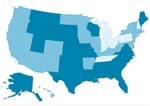Opinion
Plans drive doctors to tiers
■ Insurers should not use economic criteria to rate physicians.
Posted Jan. 1, 2007.
- WITH THIS STORY:
- » Related content
It was a victory for doctors and patients when Regence BlueShield in Washington a few weeks ago called off a flawed plan to use economic incentives to steer PPO patients to a newly created network within a network.
Physicians there rejected Regence's claims that valid measures of quality and efficiency were the deciding factors in how doctors were grouped. They suspected that the top priority of the program -- which reviewed claims, not medical records -- was to reduce Regence's costs.
In other parts of the country, physicians are complaining of health plans using economic profiling to direct patients to a specific subset of PPO-network doctors, a phenomenon that became known as tiered networks. It's similar to efforts by health insurers for the past few years to promote drug and hospital savings.
Patients pay less out of pocket to see the plan's tier of "preferred" physicians. Those savings, however, can come at the price of the patients not seeing the trusted doctor they'd prefer to see. At the same time, the tiers are an unsubtle message to physicians not to cost the plan too much money. Doctors see it as a divide-and-conquer tactic to pit patient against physician -- with health plans picking up the spoils.
In the case of Regence, the plan called off its "Select Network" plan in the face of a lawsuit filed by six physicians and the Washington State Medical Assn. The Regence announcement came just days after the American Medical Association/State Medical Societies Litigation Center joined the case.
The lawsuit against Regence claimed the company used faulty data to make haphazard measures of quality. For example, according to the lawsuit, the Regence plan penalized physicians who failed to provide diabetes care -- to patients who didn't have diabetes.
Doctors also complained Regence used faulty data to measure efficiency -- the cost end of the equation.
One physician plaintiff said he suddenly dropped to the 12th percentile of efficiency, when the year before Regence placed him in the 90th and gave him an award for his efforts.
Regence is defending the use and quality of its data even as it drops the Select Network. (However, physicians are still planning to litigate claims of defamation and libel, related to a letter Regence sent to patients of the 530 physicians excluded from the new network because they did not deliver "high-quality, efficient care ... as compared to their peers." Regence later apologized for that letter.)
Regence's proposed network was reminiscent of a UnitedHealth Group-designed plan in the St. Louis and Shreveport, La., areas last year. In that instance, as well, beating back a flawed tier plan required the resources of organized medicine, including the AMA and local societies.
Despite the success in fighting Regence and UnitedHealth Group, tiered networks are popping up elsewhere. Aetna and Cigna, for example, have set up specific divisions to spread the ranking of physicians by tiers throughout their nationwide collection of local networks.
The AMA has vowed to keep fighting against economic profiling. At its November 2006 Interim Meeting, the AMA House of Delegates approved a framework for requiring the Association to work to induce health plans to disclose criteria used to compare physician performance, to ensure physician comparisons are not inappropriately driven by economic criteria, to prevent unfair insurer restrictions from jeopardizing access to care, and finally, to explore legal action to address questionable economic profiling. The AMA considers the Regence case its first test of those guidelines.
The AMA and other medical organizations have made clear they are willing to work with plans to discuss quality standards that make sense. But the history of tiered plans so far appears to be plans unwisely pushing ahead with methods and quality standards that, ironically, can't withstand close scrutiny.












